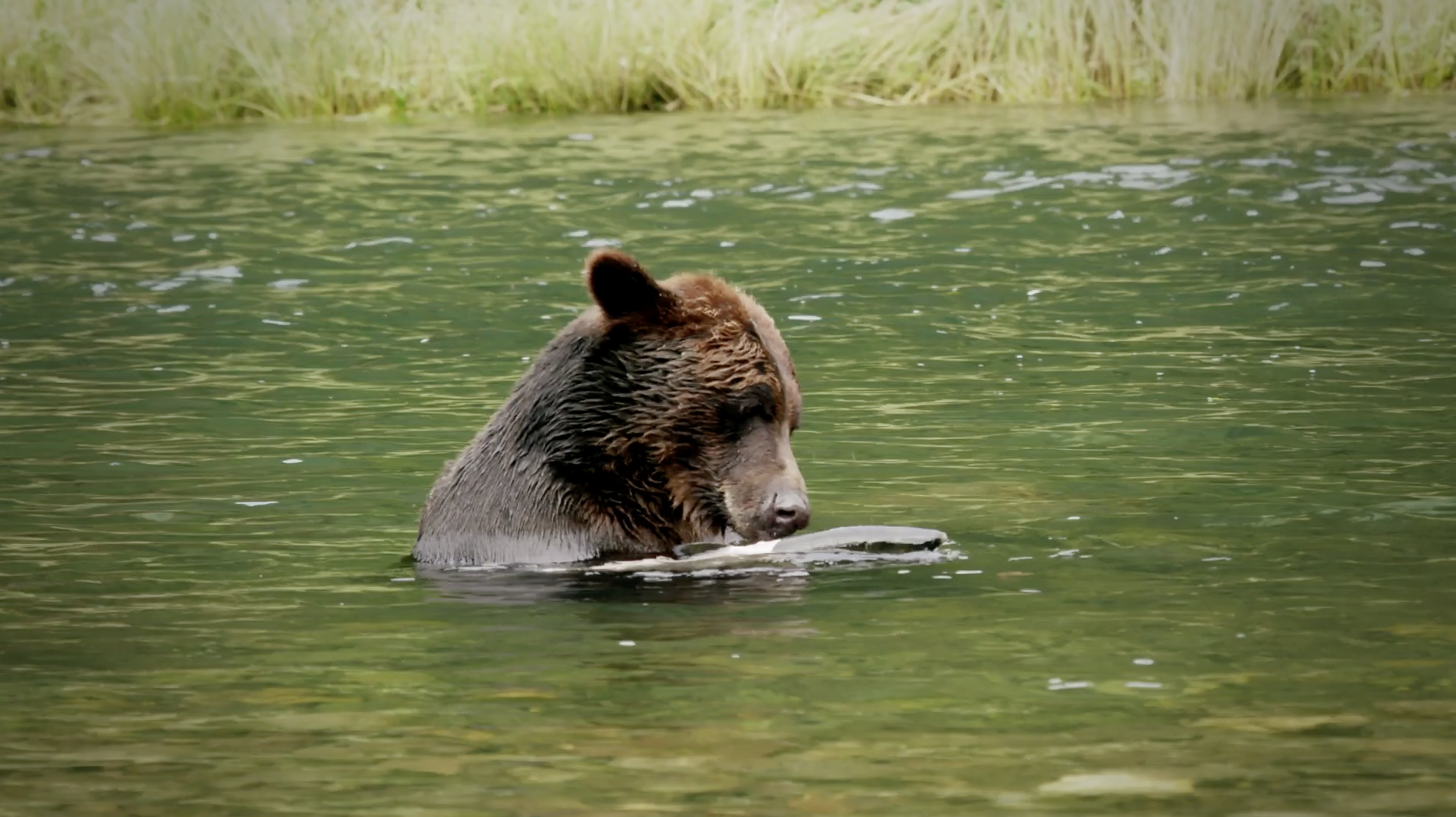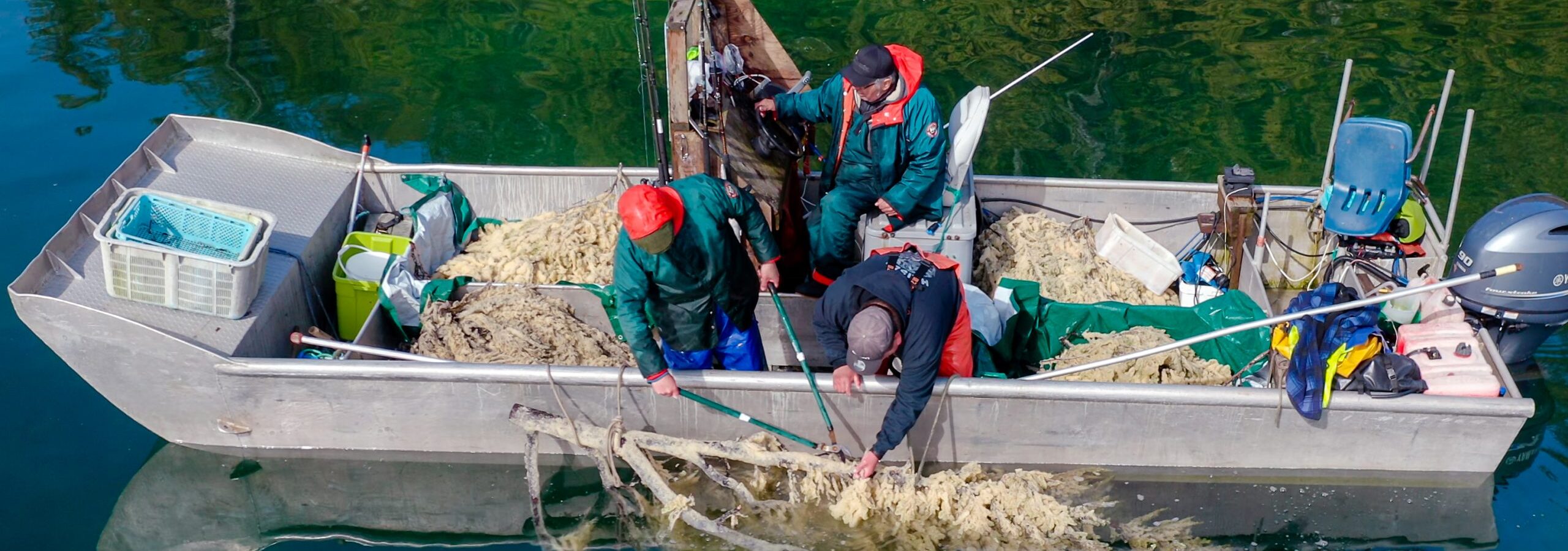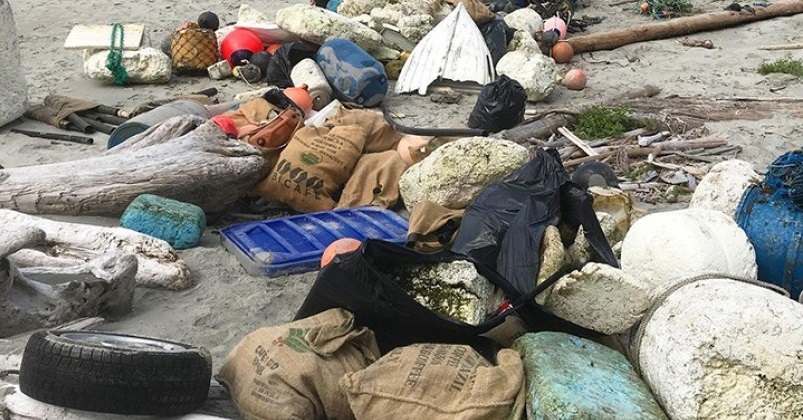With a COVID-19 lockdown on borders around the globe, the Kitasoo/Xai’xais Nation has seized a once-in-a-lifetime opportunity to study the impacts of reduced ecotourism traffic on bears in its territory.
The Kitasoo Bear Ecotourism Study will provide the rigorous data needed to create management plans that will protect grizzly, black and white Spirit bears. Through the Great Bear Rainforest Agreement, the Nation has set aside 85 per cent of its lands in protected areas, with more than 50 per cent dedicated to conservancies.
“We have a very unique opportunity this year because of the lack of tourism,” says Resource Stewardship Director Doug Neasloss. “Almost all the commercial tourism operators will not be coming up until mid-August and they may even cancel their whole season. We may not have this opportunity again in the next 50 years.”
The multi-year research project will monitor bear activity through the placement of motion sensor cameras in the territory from spring to October. Bear movement around the clock will trigger camera capture of photo data to help the Nation’s bear science team learn if the bears behave differently in the absence of people.
“Lines on the map don’t protect bears, people do,” says Neasloss. “This project is about developing solid management plans. We want to be able to control the different activities that happen and keep these areas as beautiful as they are.”
Neasloss says a lack of science is a major challenge in creating sound management plans. He says the plan for the Kitasoo Spirit Bear Conservancy established in 2015, took eight years of negotiation between the Province and Kitasoo/Xai’xais, Heiltsuk, and Gitga’at Nations to ensure the wildlife protections Nations required.
The study results will help to inform decisions about how many companies, people and vessels can go into conservancy areas, explains Neasloss. “We want to be able to put a cap on the number of commercial operators and the number of people. We want to have spatial restrictions and temporal restrictions.”
Without these limits, he says, conservancies can be inundated with sports fishing boats, cruise ships, float planes, drones and tourism helicopters. “Wildlife is super important to our people. We want to create management plans based on sound planning that bring local knowledge to the table.”
Kitasoo Science Coordinator Christina Service leads the ecotourism study that employs five community members. She says field cameras will provide very fine resolution data to help answer questions such as what time of day bears are active, whether the presence of tourists affects these times, and whether behaviour varies by age and sex.
“We can also see if bears use different parts of the estuary when humans are there. Are they pushed away or more likely to be around humans? Do they spend more time getting salmon or less?”
First year research will provide a baseline of conditions for bear behaviour in tourism and non-tourism zones set out in the territory. “Then we can compare the difference in activity in these areas to the next year when tourism returns,” explains Service. “This is our once-in-a-lifetime shot at having a situation like this. We won’t get another year like this.”
The study is the most in-depth of its kind on the coast, she says. Service hopes in future to add high resolution video monitoring to capture even more detailed information about human impacts on bear salmon harvesting and sedge foraging.


